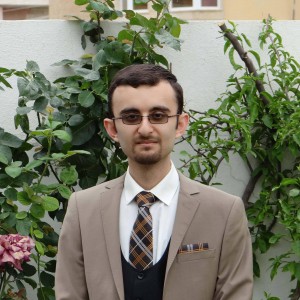Published Journal Articles
2018
Features Optimization for ECG Signals Classification
2018-12
(IJACSA) International Journal of Advanced Computer Science and Applications (Issue : 11) (Volume : 9)
A new method is used in this work to classify ECG beats. The new method is about using an optimization algorithm for selecting the features of each beat then classify them. For each beat, twenty-four higher order statistical features and three timing interval features are obtained. Five types of beat classes are used for classification in this work, atrial premature contractions (APC), normal (NOR), premature ventricular contractions (PVC), left bundle branch (LBBB) and right bundle branch (RBBB). Cuttlefish algorithm is used for feature selection which is a new bio-inspired optimization algorithm. Four classifiers are used within CFA, Scaled Conjugate Gradient Artificial Neural Network (SCG-ANN), K-Nearest Neighborhood (KNN), Interactive Dichotomizer 3 (ID3) and Support Vector Machine (SVM). The final results show an accuracy of 97.96% for ANN, 95.71% for KNN, 94.69% for ID3 and 93.06% for SVM, these results were tested on fourteen signal records from MIT-HIH database, where 1400 beats were extracted from these records
ECG Signal Classification Using Scaled Conjugate Gradient Learner Algorithm
2018-04
International Journal of Medical Research & Health Sciences (IJMRHS) (Issue : 7) (Volume : 5)
This study is based on classifying the ECG signal into five types of classes by using statistical and timing intervals features. First, the data signals were denoised and prepared for classification. Second, 24 higher order statistical features with 3 timing interval features were extracted from each selected beat. In this work, we have 5 types of classes, atrial premature contractions (APC), normal (NOR), premature ventricular contractions (PVC), left bundle branch block (LBBB) and right bundle branch block (RBBB) were used for classification. Third, each beat was classified according to one of these classes by using the learner algorithm scaled conjugate gradient (SCG) artificial neural network (ANN). SCG is a fast algorithm and suitable in cases of less memory and ANN is a machine learning algorithm that is based on the biological neural system. The experimental results of this work shows an accuracy of 96% on 1400 beats taken from 14 records from MIT/BIH arrhythmia database.
Denoising of Arrhythmia ECG Signals
2018-02
International Journal of Medical Research & Health Sciences (IJMRHS) (Issue : 7) (Volume : 3)
This study is about using the genetic algorithm (GA) with wavelet transform (WT) for Arrhythmia Electrocardiogram (ECG) signal denoising purposes. The WT is a time-frequency signal analysis, and the GA is an optimization technique based on survival of the best solution using the maximized or minimized fitness value obtained from the fitness function. In this study, the parameters of WT are used as inputs for the GA for denoising the input signal that is corrupted by white Gaussian noise and gives an output of as fitness value. The input corrupted signal will pass through decomposition process to extract approximation and details coefficients, then thresholding the details coefficients using a threshold value in order to remove the noise, and finally reconstruction of the signal using the approximation and denoised details coefficients. The results of denoising ECG Arrhythmia records were compared with other studies in the field of wavelet denoising, and the comparison showed that the results of this work is better.
2013
SYRIAC Character Recognition System Using Back Propagation Neural Network
2013-12
International Journal of Current Engineering and Technology (Issue : 5) (Volume : 3)
The Syriac language is one of the Semitic languages that is being spoken in Iraq, Syria, Turkey and Iran by Assyrians. It’s an ancient language, one of the rarest and oldest in the world. In this paper A Syriac character recognition system using Back propagation Neural Network is proposed. A pre-processing step is implemented to separate each character from the others. After that a feature extraction process is applied on each character to obtain the invariant moments. Back propagation neural network is trained on invariant moments of East Syriac alphabet, and tested on these characters to verify each character image belongs to which type of character. This is done by using visual C#.
Back
